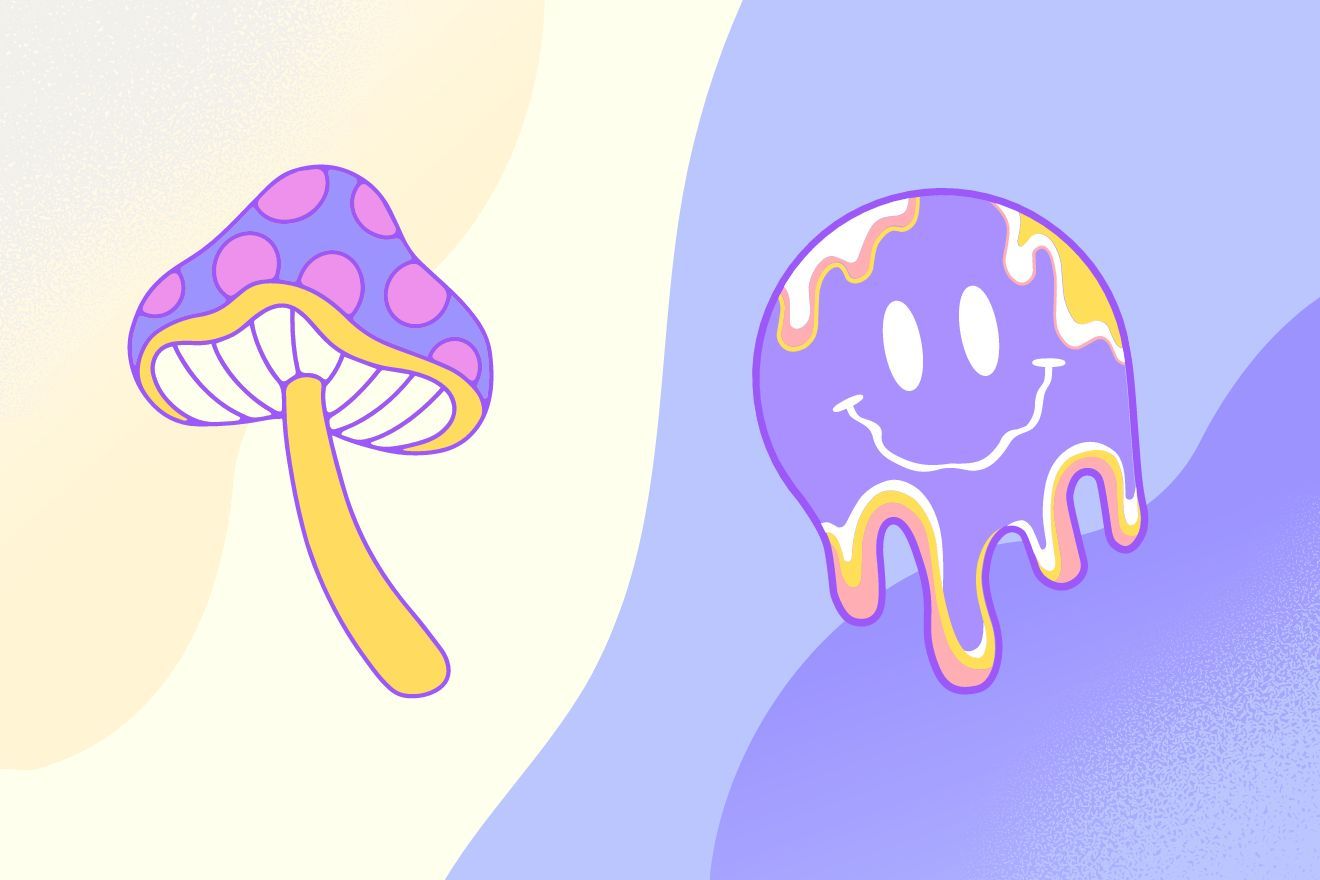There’s a popular narrative in the psychedelic community that natural psychedelics are superior to synthetic versions. For example, consuming psilocybin mushrooms or San Pedro whole is considered to offer a more ‘complete’ experience than ingesting pure psilocybin or mescaline.
Natural psychedelics do have a context of traditional usage and possible entourage effects (more on this later) that synthetic compounds lack. But this does not necessarily make natural versions better than synthetic psychedelics in all cases. There are several instances in which synthetic compounds can actually be preferable to whole plants and mushrooms.
The line that ‘natural is better’ can discount the advantages and utility of synthetic psychedelics. There can be an assumption that natural versions offer a spiritual depth to experience than synthetic compounds can’t. But this assumption does not match everyone’s journeys.
More Accurate and Reliable Dosing
The first advantage of synthetic psychedelics is that they make accurate dosing a lot easier. In whole psilocybin mushrooms, the compounds psilocybin and psilocin won’t be evenly distributed in the material. The cap, for instance, could contain a higher concentration of these compounds than the stems. But it is also possible for the stems to be more potent.
Users may get around this issue by powderizing dried shrooms. This should lead to an even distribution of the psychedelic chemicals in the final product. However, this doesn’t avoid the issue of potency varying between batches. One also can’t be sure of the mescaline content in cacti such as peyote and San Pedro. Lab analysis could reveal this, but that’s not going to be an option for the large majority of users.
Learn More About Psilocybin and DMT with These Popular Substance Resources:
- Explore Magic Mushroom Dosage, Storage, Harm Reduction, and Strains in This Guide
- Gain a Deeper Understanding of DMT With Our Substance Guide
- Read About Exciting Developments in 5-MeO-DMT, a.k.a. the God Molecule
- Discover the Magic Behind the Mushrooms in Our Psilocybin-Assisted Therapy Guide
One company, Mimosa Therapeutics, has developed a natural psilocybin product that tries to resolve this problem. Mimosa has cultivated the mycelium root structures of psilocybin mushrooms in bioreactors. Jim Keim, the company’s CEO, says this creates a precise and consistent potency containing all the natural compounds found in the fungi. The company sells the product in droplets called Pearls.
However, if we are comparing just whole psilocybin mushrooms with synthetic psilocybin, the latter may still be preferable in some contexts. For instance, in clinical and research settings, precise dosing is desirable. Clinicians, researchers, and patients want to know that they are using a certain dosage. This is crucial to the intensity of the experience. Of course, many clients will be comfortable with using whole mushrooms during therapeutic sessions in Oregon and Colorado (where such use has been legalized). However, some people will feel more at ease knowing exactly how much psilocybin they will be ingesting.
Fewer or Less Intense Side Effects
One aspect of natural psychedelics that users often find off-putting is the physical side effects. Consuming whole psilocybin mushrooms can cause nausea and a noticeable body load. Stomach pain and GI distress are possible. (The intensity of these effects does differ from user to user, but they are generally considered classic side effects.) Consuming San Pedro cactus is known to produce more intense nausea than mushrooms. It is also more likely to result in vomiting.
In a Psychedelic Science Review article on mushroom-induced nausea, Barbara E. Bauer writes:
“The available evidence points to indigestible chitin, immune response to pathogens or toxins, psilocybin, psilocin, or a combination thereof as possible causes of nausea from ingesting magic mushrooms. In addition, it’s conceivable that experiencing nausea may be due to a person’s level of hydration, physical condition, individual variations in metabolism, dosage, or other factors. Also, consider that the entourage effect may be at play here. Certain combinations of magic mushroom molecules may cause nausea, although individually, they do not. Many of the questions about nausea from ingesting magic mushrooms could be answered by research into the individual compounds they contain.”
This information is not to say that synthetic psilocybin and mescaline produce no nausea or vomiting. Clinical trials involving psilocybin have led to some participants experiencing transient nausea and (in fewer instances) vomiting. Synthetic mescaline—in hydrochloride form, for instance—is also known to produce nausea. It might be less noticeable than with peyote or San Pedro, but it’s still often present. In addition, some people still vomit after consuming synthetic mescaline.
Nonetheless, synthetic versions of psychedelics typically cause fewer or less intense physical side effects than natural versions. For some users, nausea, body load, and vomiting associated with psychedelic plants and mushrooms put them off psychedelic journeys. These effects can sometimes become too distracting and long-lasting, taking one away from a deep inner journey. Synthetic psilocybin and mescaline may offer a possible way around this.
Otherwise, one can use nausea-reducing techniques when consuming mushrooms or cacti:
- Consuming ginger tea or ginger-based products
- Using anti-nausea medication
- Lemon tekking
- Pre-trip fasting
Ethical Advantages
Consuming some natural psychedelics may have some ethical risks and downsides. Tim Ferriss has spoken out about these. He points to peyote populations being under threat (the species is nearly extinct). This, in turn, threatens the traditional use of peyote by the Native American Church (NAC) and indigenous groups. In order to protect the species and its cultural usage, Ferriss recommends opting for San Pedro instead. The latter grows much faster, so it can be cultivated oneself. It’s also not under threat in the wild. But he adds, “Synthetic mescaline is also an outstanding substitute.”
Many of the questions about nausea from ingesting magic mushrooms could be answered by research into the individual compounds they contain.
— Barbara E. Bauer
Using natural 5-MeO-DMT, a venom extracted from the Colorado River toad (Incilius alvarius, formally known as Bufo alvarius), also has ethical pitfalls. Wildlife conservationists have warned that people should stop milking these toads. Otherwise, they will die out. Arguably, such milking could also be viewed as a form of exploitation, thus conflicting with animal rights. Fortunately, synthetic 5-MeO-DMT is easy and inexpensive to make.
The chemist and documentarian Hamilton Morriss has defended the use of synthetic 5-MeO-DMT over its natural counterpart. He has pushed back against the idea, promoted by some members of the psychedelic community, that the natural version is somehow superior. This thinking can be based on the idea that the ‘spirit of the toad’ is present in the latter.
Nevertheless, Morriss points out there is no evidence that other alkaloids in the toad venom enhance the overall experience:
“Only one other compound, bufotenine, is definitively a psychedelic in humans, but it’s found in such small quantities that its contribution would either be negligible or non-existent based on what’s understood about the chemistry of this.”
Do Natural Psychedelics Offer Deeper Experiences?
The entourage effect refers to the phenomenon of multiple alkaloids creating a different or enhanced psychoactive effect. While this may not apply to the toad venom experience, it might apply to other natural psychedelics. For example, in a recent study on mice, researchers found that a psilocybin mushroom extract produced different effects compared to synthetic psilocybin. The authors stated:
“While our data do not provide conclusive evidence for the therapeutic superiority of naturally-derived psychedelic mushroom extract over chemical psilocybin, they open the door to serious consideration of the potential of combinations of molecules found in psychedelic mushrooms…Such combinations may not only have enhanced or more prolonged therapeutic effects but may result in even more effective combinations by increasing the amount of the additional neuroactive compounds that are only present in extremely small amounts naturally.”
Other active alkaloids present in different species of psilocybin mushrooms include baeocystin, aeruginascin, norpsilocin, norbaeocystin, harmine, harmaline, and terpenes. It is possible that some of these may modulate the effects of psilocybin. The result may be a more intense or enhanced experience. Some speculate that other alkaloids present in psychedelic cacti may have a similar effect.
However, if psychedelic mushrooms and cacti do modulate the effects of psilocybin and mescaline, respectively, it is not clear how and to what extent they do so. The entourage effect may be real when it comes to psychedelics. Even so, it does not mean that only natural psychedelics offer ‘authentically spiritual’ experiences. Deeply spiritual or mystical experiences occur with the use of synthetic compounds. Synthetic psilocybin and mescaline experiences can also lead to mystical effects, visions, and encounters with spirits, entities, or a divine presence.
We should be open to the possibility that expecting a natural psychedelic to offer a more profound experience may encourage that very effect to occur. After all, ‘set’ (which includes our expectations) can significantly influence the journey. Nonetheless, natural psychedelics do often have ceremonial traditions surrounding them (e.g., group ayahuasca and iboga ceremonies). And this ritualistic context can create uniquely valuable experiences. These are experiences that differ in several ways from the sessions in clinics that involve synthetic compounds. Whether one or the other is right for you comes down to personal circumstances and preferences.






